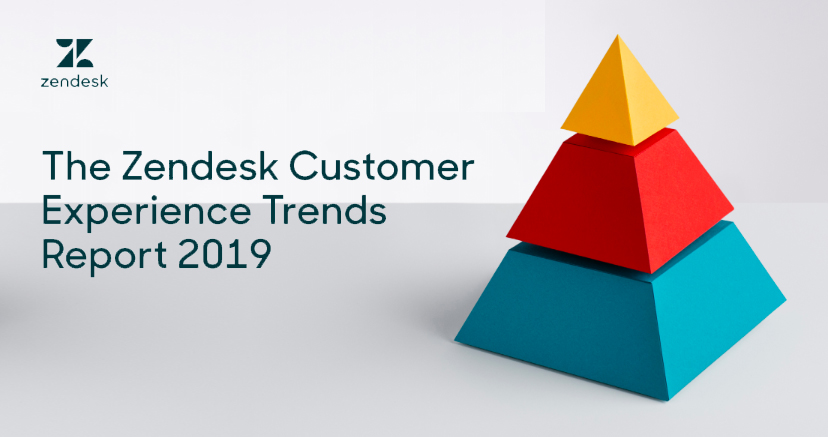SINGAPORE – In a digital landscape, customers have a two-way street relationship with companies. However, this is not always a good thing, according to The Zendesk Customer Experience Trends Report 2019.
From 45,000 customers’ product usage data worldwide, Zendesk reported that companies of all sizes across industries and geographies lack the capabilities needed to keep up with ever-increasing customer expectations.
While good customer service outranks convenience and reputation when people are considering which companies to do business with, according to the report, there is a global dip in overall customer satisfaction. Over the past five years, customer satisfaction is down 2.2 percent, from 94.6 percent in 2013 to 92.5 percent in 2018, decreasing nearly a full percentage point in the past year. In the Forrester Research report, “The Five CRM Trends In 2019 That Will Shape Engagement, Relationships, And Revenue,” analyst Kate Leggett writes, “In the age of the customer, executives don’t decide how customer-centric their companies are — customers do.”
“In the last quarter of 2018 we saw a spike in customer satisfaction across Southeast Asia, likely as a result of brands stepping up their customer experience strategies and planning well in advance of the peak shopping periods to make sure they had robust infrastructure in place to deal with the spike in customer enquiries,” said Sandie Overtveld, VP APAC, Zendesk. “Our research has shown that the performance gap between customer experience leaders and laggards in SEA continues to widen, placing more pressure on laggards to step up their CX platforms, or risk being left even further behind.”
According to The Zendesk Customer Experience Trends Report 2019, companies in travel, financial services, and retail industries are more likely to be among the leading innovators. Companies like Amazon, Uber, and Airbnb are built on an entirely new kind of customer experience, raising the stakes for everyone. These businesses stand out for their ability to simplify the purchasing experience, communicate directly with consumers with digital tools, and use powerful data analytics to improve operations.
For those companies still struggling to deliver the experience their customers expect, the report identifies specific areas where businesses of all sizes, in every industry, can close the gap between what customers want and what they’re getting. According to the report, the most successful companies do the following:
Invest in an open, flexible platform: The World Economic Forum said earlier this year that fewer than 10 percent of business models are economically viable as the world digitizes. Seventy percent of the world’s top 10 most valuable companies (Amazon, Apple, Alibaba, Microsoft et al) and 70 percent of the $1 billion+ “Unicorn” startups (Didi, Airbnb et al) operate a digital platform business model, yet fewer than 2 percent of other companies do.
Nearly 70 percent of customers expect support teams to collaborate so they don’t have to start over when contacting the same company through a different channel. This means companies need to manage customer data across all aspects of the customer experience and ensure a single record of the customer persists across channels, devices, and requests.
Pushing data in and out of support software using APIs, apps, and integrations can help businesses see a complete view of their customers. Companies using APIs resolve tickets 21 percent faster, and their customers spend 35 percent less time waiting for agents to respond, all while managing more than three times as many requests.
Meet customers where they are: The Zendesk Customer Experience Trends Report 2019 findings show that 40 percent of customers prefer to use search or help centers before contacting support, yet only 20 percent of support teams provide self-service.
When they do have to contact customer service, customers want to be able to switch between channels and pick the one that best meets their needs. A whopping 85 percent of customers will use a different contact method if they don’t get a response from their initial request, with 44 percent waiting less than an hour before doing so.
Lean in to proactive engagement: While 30 percent of support teams are currently using proactive engagement for sales and marketing, according to the report, there are key benefits often overlooked, including reducing customer effort, preventing issues with a product, and minimizing support tickets for customer service agents. The vast majority of customers, nearly 90 percent, said they look more favorably on or are neutral about companies that reach out proactively.
Bet on AI: High performing businesses are twice as likely to use AI. In fact, companies using AI powered features by Zendesk have saved 225,000 agent hours and given 2,800 years back to customers. They’re resolving tickets 21 percent faster while handling six times the volume of requests. That said, 85 percent of enterprise companies aren’t yet using AI.
To learn more about the most important trends in customer experiences in 2019 and beyond, go to zendesk.com/customer-experience-trends to download the report and check out the Customer Support Performance Scorecard, a personalized rating to help companies assess their own customer experiences.
This report combines data from the Zendesk Benchmark, an index of product usage data from 45,000 companies using Zendesk, with the results of surveys and focus groups gauging the attitudes of customer service managers, customer service agents, and customers from Australia, Brazil, Canada, Germany, the United Kingdom, and the United States.







